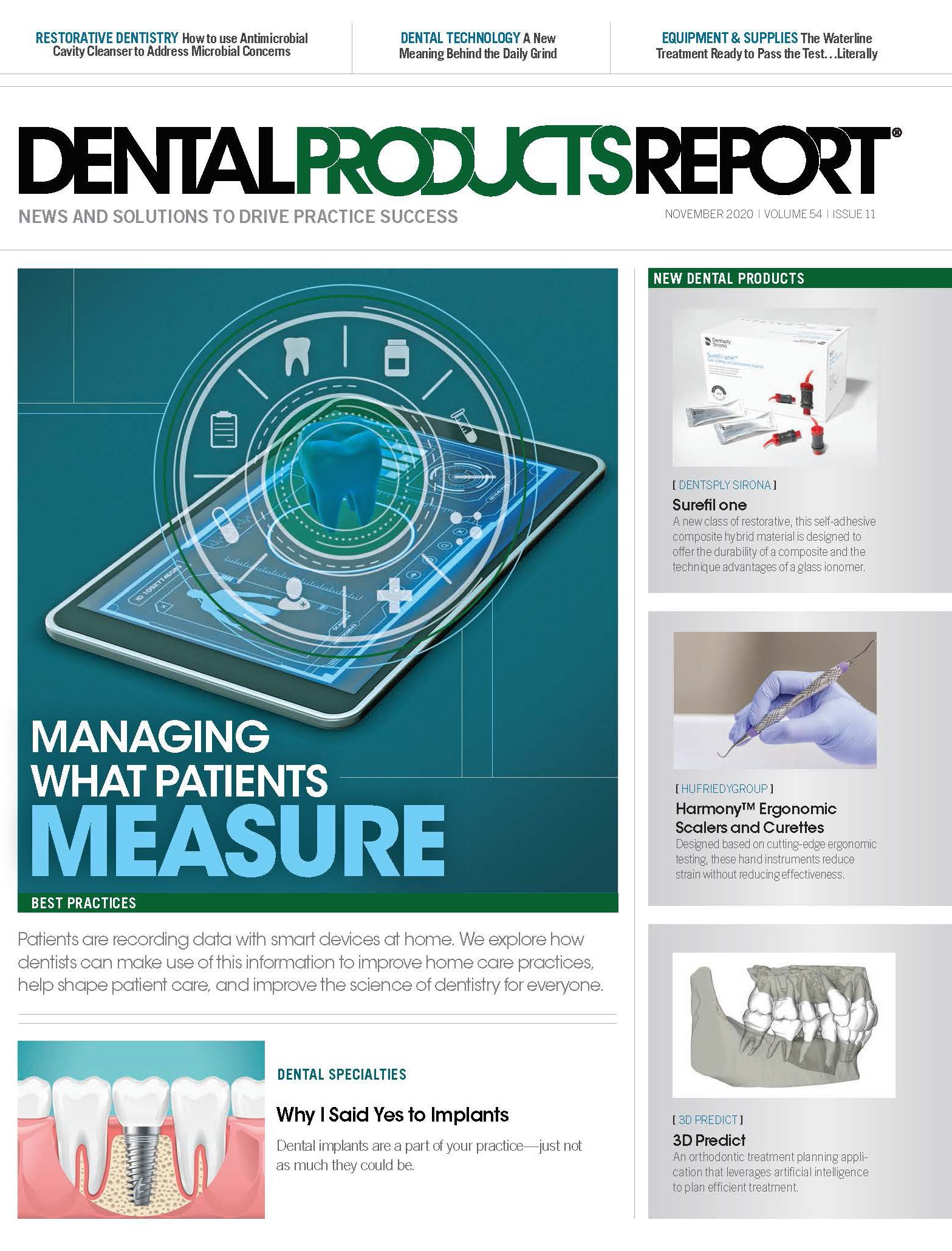Managing What Patients Measure
Patients are recording data with smart devices at home. We explore how dentists can make use of this information to improve home care practices, help shape patient care, and improve the science of dentistry for everyone.
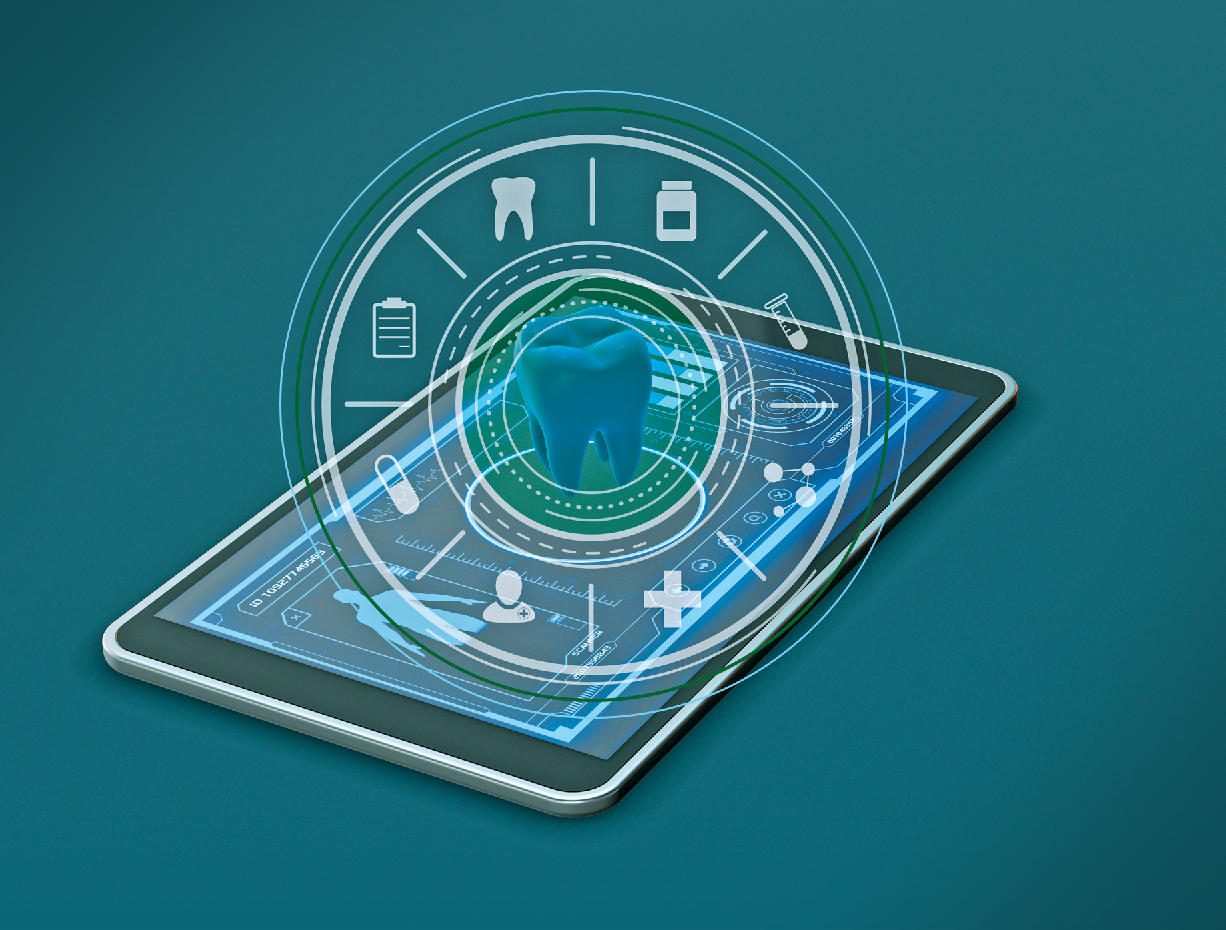
Smart devices are ubiquitous these days. From your phone to your car to your watch, you likely have a few smart devices in your possession, and they constantly collect data.
Smart devices made their way to oral health care a few years ago with smart toothbrushes, and they also collect data. So far, only the toothbrush owners have used that data. However, if the data were shared and aggregated, what benefits would result for patients, dental professionals, and the science of dentistry?
We spoke to a few experts about how dentists can manage data from patients’ smart devices to improve home care practices, help shape patient care, and improve dentistry.
What’s So Smart About These Devices?
The idea behind smart devices is that they can communicate and compute, with or without our help. They are part of the Internet of Things (IoT), which is how we describe the interconnection between tangible smart devices and the intangible World Wide Web, but enhanced by intelligence and virtual identities they generate that connect and communicate in different ways.1 A smart device requires 3 main features:2
1.Context-awareness: the ability to adapt to the environment around it
2.Autonomous computing: the capability to perform a task without a direct command
3.Connectivity: the capacity to connect to a data network
Experts predicted users would connect anywhere from 25 billion to 50 billion smart devices to the internet by this year.1 Some of these include phones, watches, and cars, but others are dental devices, such as toothbrushes and mouthguards.
A Little Background on Big Data
You might have seen the term “big data” used online and in mainstream media. The term refers to all the information gathered by a multitude of sources. However, the National Institute of Standards and Technology (NIST) describes it as “a large amount of data in the networked, digitized, sensor-laden, information-driven world” that needs architecture to store, manipulate, and analyze.3 In other words, it means there is so much of it that big data needs large systems to manage it.
The 3 Vs are integral to big data, which were attributed to it by industry analyst Doug Laney in 2014:
Volume:the sheer amount of data that exists
Velocity: the speed at which data accumulates
Variety: the format(s) of the data
NIST added a fourth V, Variability, which addresses the change in the other characteristics.3
However, big data is raw. There is a lot of it, but it can’t do anything on its own. It needs management to be useful. So, while experts agree there is enormous power buried in the mountains of data that exist, the challenge is mining those mountains to extract meaning from the data.3
Smart toothbrushes have been collecting data for some time. Smart mouthguards are another example, although they are relatively new. The data these devices collect could have significant implications for patients, dentists and the dental profession.
Helping Patients Improve Home Care Practices
John Flucke, DDS, and technology editor for Dental Products Report®, said collecting data about home care through smart toothbrushes is crucial. He likes the coaching element and tracking properties to help patients improve their home care.
“The combination of knowing the right pressure to use and then brushing for the right amount of time is horribly important,” Dr Flucke says.
Jeremy Krell, DDS, MBA, and director of dental for quip, which manufactures smart electric toothbrushes that promote good oral care habits, says consumer behavior research shows people don’t follow brushing advice from their dentists. A more effective way to enforce good brushing behavior, he said, is to make it habitual using patient data.
“It’s about making sure you complete the basic habit and do it correctly,” Dr Krell says.
“We have 3 key pillars of how we approach our consumer care products: simplicity, accessibility, and enjoyment of the product,” says Simon Enever, founder and CEO of quip.“Our first goal as a brand was to use design to get people to want to use our oral care products and invest more time and energy into their oral care as a whole.”
Forming a new habit requires repetition and consistency in behavior. Charles Duhigg’s book, The Power of Habit: Why We Do What We Do in Life and Business, shares MIT research that discovered a behavioral loop at every habit’s core. Habits begin with a cue that triggers a routine and produces a reward.5 Based on research from the European Journal of Social Psychology, Healthline.com estimates it can range from 18 to 254 days to create a new routine and usually around 66 days for a new behavior to become automatic.6
Enever says quip uses this cycle in its design considerations to improve patient habits. For example, the quip smart brush attaches to the patient’s mirror to keep oral care top-of-mind, and remind users to brush when they see it. The Quip smart brush is also designed with built-in timers, which track how long patients are brushing, how vigorous their brush strokes are, how many brush strokes they use, and whether they’re brushing their mouth evenly and thoroughly. The sonic vibrations and 30-second timer pulses were implemented to ensure all parts of the mouth are brushed equally.
“For our original brush, the reward was that people enjoy using it due to its design and gentle and quiet function. Our smart brush combines that with a literal rewards platform based on you sticking to good brushing habits to provide an even more direct incentive to complete the habit cycle,” Enever says.
Implementing good brushing habits is similar to exercising regularly, according to Dr Krell. At first, the hassle of going to the gym might deter you from working out. However, over time and consistent attendance, your mind and body have already accepted these challenges when it is time (the cue) to go. Once it becomes a ritual, the internal struggle is eliminated.
Once the frequency is established, tackling technique is the next step. Improving brushing technique requires collecting this data to help patients understand what they are doing well and what they aren’t. The data the brush collects gives patients guidance on their routine through the app. For example, the data could reveal the patient is not covering top and bottom teeth evenly, fails to use it for the full 2 minutes, presses too hard, or moves too fast when brushing, which patients discover through the app interface.
“This data gives us an added layer of coaching to that routine,” Enever says.
Dr Flucke also sees the benefits of data tracking for parents of small children. He remembers fooling his mother when he was a kid by running his toothbrush under the water in the sink and hanging it back up without brushing. Parents today could do a more thorough check with the collected toothbrush data.
“For parents, especially as busy as our world is now, this might be a nice thing to be able to say, ‘Oh, look. They are brushing morning and night for 2 minutes,’” Dr Flucke says.
One of the challenges quip encountered is people stop using the features after a time. In the case of smart device wearables, patients might be excited about using them at first but will stop for a variety of reasons, like cost,lack of time, or because they’ve reached their goal.7
Helping patients establish routine is essential, Enever says. The quip rewards program was designed to encourage patients to keep using the app and earning points for brushing accomplishments, like brushing 2 times a day or using it for the full 2 minutes, among others. Then, the users redeem those points with their favorite retailers. For example, one of the rewards is a $5 gift card from Target.
“It may sound simple, but if all you have to do for that $5 gift card is brush your teeth twice daily, it has a fundamental difference in how people are engaging with data and using technology to help these important habits,” Enever says.
The Oral-B Guide Smart Brushing System works like a fitness tracker for your mouth, capturing important brushing data so you can monitor improvement over time via the companion app.
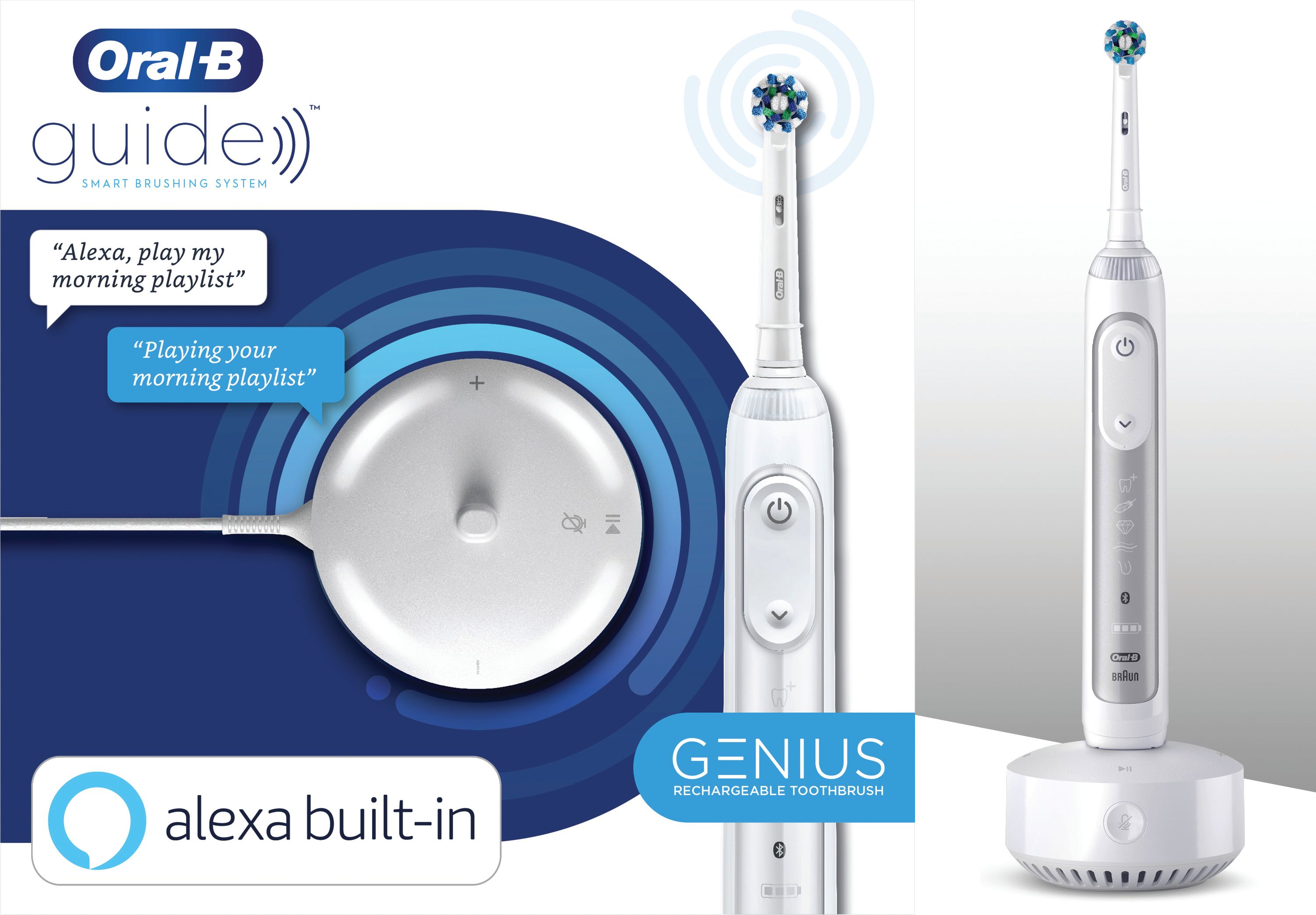
Smart brush users are proving the rewards-based theory, he adds. With anonymized, aggregated data collected from the tens of thousands of quip smart brushes being used daily since its launch, quip has seen an average of 116 seconds per brushing session with its smart brush users so far, which is higher than the national average.
“Thirty-three percent of people don’t brush twice daily; however, so far our users are brushing on average 1.85 times a day,” Enever explains. “So, we are seeing that upside of offering that third pillar—rewards—for habit formation, and as we continue to improve the app we are excited to improve these habits even further.”
Understanding how patients think and their motivations can help improve patients’ at-home care habits, Enever says. However, it’s also important to help people engage with dental professionals and understand why preventive care is so critical to oral health.
“Data can help with the prevention piece,” Enever says. “Patients may not need to go have an expensive or painful surgery if they’re practicing good oral care at home.”
More Data Can Mean Better Patient Engagement, Faster Diagnoses
Michael Wright, DDS, MS, a prosthodontist in Bethesda, Maryland, and founder and CEO of The WrightGuard Innovation Corporation (TWGIC), was part of the team that licensed the technology used for a smart mouthguard earlier this year. Working with the University of Maryland School of Dentistry, Dr Wright and the university team imbued the mouthguards with sensors to relay information to a smart app or device.
“We can better analyze and treat these athletes, as well as military personnel. We can not only try to avoid injuries, but also to learn more about them, so when they occur, we can better treat them,” Dr Wright says.
The sensors in the smart mouthguards measure a few different areas of biometrics. An app then processes these biometrics. The smart mouthguards measure:
- Force of impact
- pH and hydration levels
- Body temperature
Dr Flucke sees the benefits of detecting force with the mouthguard for diagnostic information on concussions, particularly in sports such as football or soccer. Moreover, it could help with concussion protocols.
“If they hit a certain force limit, then it’s automatically concussion protocol 2, or things like that,” he explains. “That’s an incredible thing.”
The pH measurement is another area that Dr Flucke thinks is great for patient-athletes. There is no breakdown of tooth structure when the mouth has a neutral pH. However, many sports drinks are acidic. If an athlete is drinking lots of sports drinks off the field and then holding that acid on the teeth with a mouthguard, it could create decay at that point. Being aware of a low pH level could be useful in that instance, he says.
Patients benefit from the data collected, as well, increasing their engagement with their own oral health. Moreover, patients like to use this technology.
In January, Business Insider wrote that research found health-based wearables and fitness trackers will grow at an annualized rate of 10% in the US, and will surpass 120 million by 2023.8 According to the research, 75% of users say the technology helps them engage with their health.8
The Journal of Nurse Practitioners suggests that these advantages go further. Wearable technology can track many data points, from steps to sleep patterns to electrocardiograms (EKGs), and will analyze data automatically.7 If patients share their day-to-day data, nurse practitioners can diagnose issues faster and intervene sooner without having to rely on patient-reported recollections.7
Having this information available for analysis fits with the philosophy behind TWGIC. In 2011, Dr Wright began working with National Football League (NFL) athletes suffering from traumatic injuries that affected their ability to chew and even yawn. He developed customized mouthguards for NFL players, as well as players in the National Basketball
Association (NBA), and professional boxing.
The WrightGuard can help better analyze and treat athletes and military personnel.
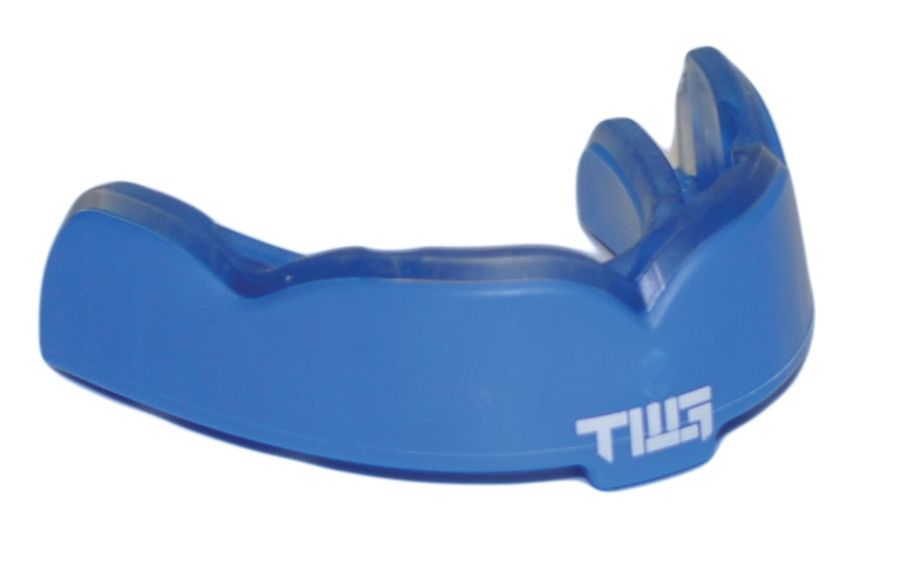
Word spread that he had effective ways to treat and prevent traumatic jaw injuries with his customized mouthguards, and the product eventually made its way to nonprofessional athletes. Dr Wright decided to make a mouthguard accessible to everyone.
Dr Wright compares using smart technology in oral health care to fitness trackers that record steps. If you only did 3000 steps, you might push to do more the next day. Eventually, you would see that doing so has benefits, such asweight loss. However, in the case of oral health care, Dr Wright said the benefits of tracking activity for patients are less time spent in the chair and fewer expensive treatments such as crowns or implants.
“Getting the patient engaged, brushing more frequently, and doing a better job ultimately reaches the goal of reducing caries and periodontal disease,” Dr Wright says.
Making Use of This Information for Patient Care
Dr Wright says TWGIC hopes smart brush technology will increase compliance with brushing. However, smart toothbrush data collected by and processed by apps also gives health care providers more tools to better understand patients’ habits, he adds.
Using that data, a health care provider can better educate patients on their oral hygiene. It also allows a more interactive communication between the health care provider and their patients, creating a baseline for patients to track progress. Also, Dr Wright says, health care providers can reinforce these metrics in the dental chair.
“You can measure how long you spend brushing, which areas you need to spend less or more time with, and even the amount of pressure,” Dr Wright says of smart toothbrush technology. “This, in turn, will inform the patient on which teeth they are not cleaning as diligently as they should.”
Dr Krell believes dental professionals will benefit most from automatic integrations of the data into practice management systems. However, he said this data will not replace what they can see in the dental chair.
“If patients open their mouth, we can tell in a minute or two how well patients are doing—or not doing—regardless of what they tell us anecdotally,” Dr Krell says.
Medical professionals are encouraged to discuss smart technology data sharing with their patients.7 The idea is that the discussion will help open a dialogue about patient care compliance.
Dr Krell shares this view, adding that people who are using smart toothbrush technology are usually people who want to improve their oral health care. However, having that information incorporated into the electronic health record automatically once patients give permission is essential.
Integration into practice management is critical, Dr Flucke agrees.
Having this data download to his practice software via the cloud as soon as a patient enters this practice would be ideal, he adds. It would be helpful to have graphics of what’s happening with home care so clinicians can have a snapshot they can assess quickly without extensive data analysis, Dr Flucke says.
“You can quickly see it yourself, but also you can quickly share it with the patient, so the patient understands,” he says.
Dentists and hygienists ask about brushing and flossing habits when patients are in the chair. One of the benefits of sharing brushing data is that it will remove doubt, Enever believes. Patients will understand how vital these daily habits are, and dental professionals will have the information to coach patients who need help.
Removing doubt also improves the patient’s relationship with the dental professional because the patient understands how daily habits contribute to the problem. The technology has developed to the point that a dental professional could correlate the swelling of a patient’s top gums because the patient brushes stronger on the top teeth than the bottom, Enever says. If the patient is doing an excellent job with home care, Enever sees those benefits.
“If technology shows that they are regularly doing all of that [brushing technique] well, that’s only going to help because you’re going to get to a solution much faster,” Enever says. “You can focus on what the actual cause of that issue is, and move forward into treatment options.”
Sleep devices are another area where useful data is collected. Some CPAP machines can track usage and compliance. Others auto-adjust air pressure to respond to the patient’s individual breathing patterns, which can vary night-to-night or even throughout one night. Some can register the force of breathing or snoring and sleep position and adjust the pressure to accommodate the patient.
Dr Flucke is a fan of the SleepWatch App by Bodymatter, which measures patients’ heart rate, sleep rhythms, and disruptions, among other factors, through wearables. He said putting these capabilities in sleep devices would be excellent.
“Having that information available to dentists as well would be nice to know,” he says. “Treating sleep, it might be nice if we could use a data aggregation from obstructive sleep apnea dental appliances. The more data we can get on that type of stuff to help people, the better.”
What This Data Could Mean for Dentistry
“Data is the new oil,” Dr Wright says. “Capturing biometric data and analyzing it is the key to longevity.”
The data provided by his smart mouthguard can offer athletes real-time protection in the short-term, he says. However, the long-term effects of collecting this data could have a more widespread impact on oral health.
“Technology like our smart guard and smart toothbrushes can help us capture biometrics and assess them with real-time occurrences,” Dr Wright says. “That is something we couldn’t do or even consider in the past. I feel as though we’re just scratching the surface on how we can better treat patients with the data that’s collected.”
These smart devices are able to help in regards to clinical research, as well, Dr Wright adds. In the past, a research team collected data for analysis at regular intervals, such as every week or once a month. However, 24-hour monitoring would provide “a fluid model,”he says, rather than snapshots.
With the quip Smart Electric Toothbrush and the quip app, users can see trends in their habits over time, and get tips and reminders to help them improve.
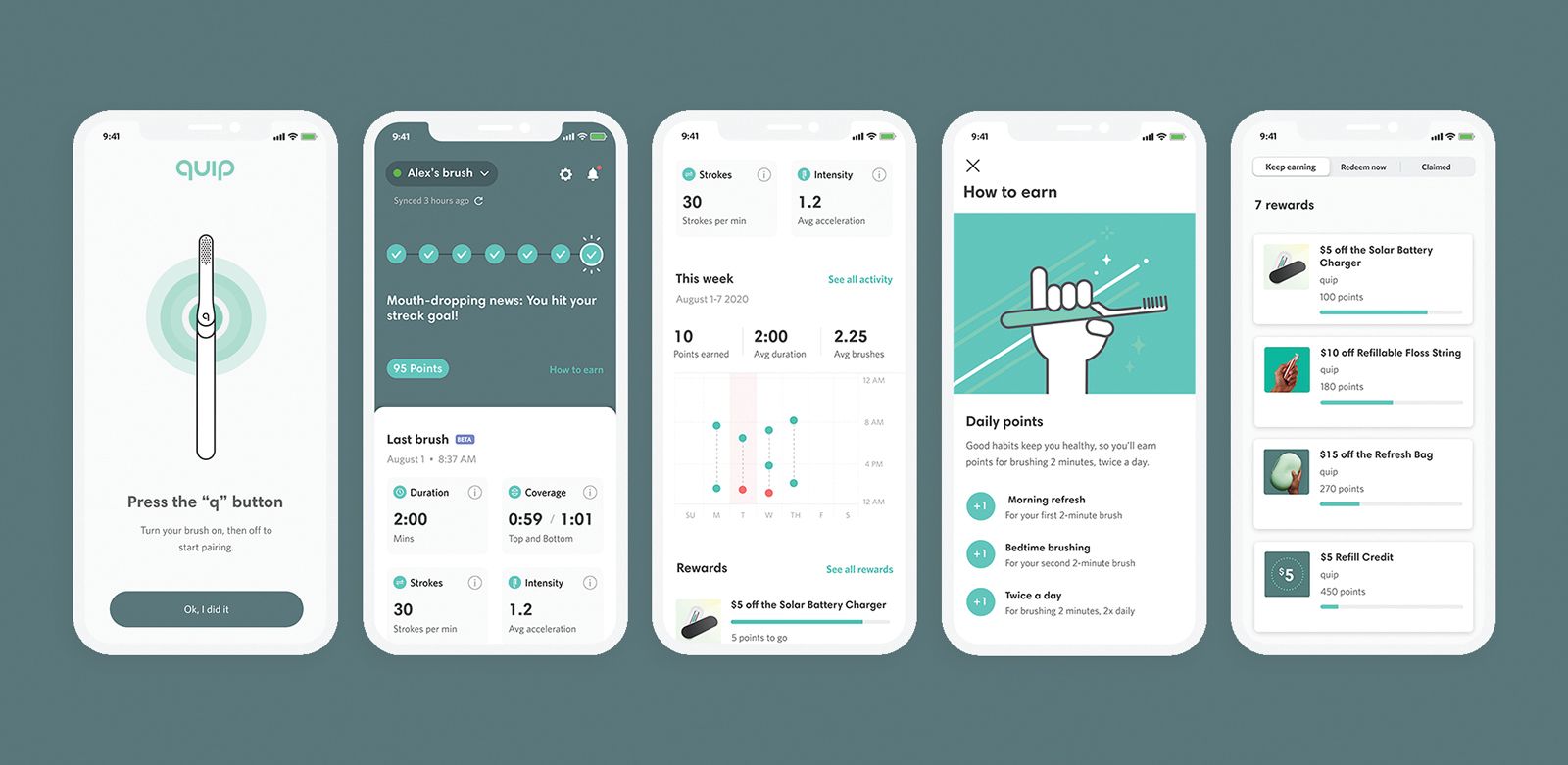
“That is, I believe, a game-changer,” Dr Wright says.
The University of Maryland School of Dentistry and TWGIC hope to use the data from smart guards to serve as tools for early detection of systemic diseases, which could not only save teeth but patients’ lives. Dentists can use the data to increase understanding of a condition, improve treatment, or possibly to find cures for diseases, Dr Wright says. He believes wearable technology can benefit patients with insurance premiums, comparing it with a “safe-driving” discount that some car insurance companies offer drivers.
“It has been proven that wearables improve health, so patients may receive medical benefits from insurance companies when certain milestones are met,” Dr Wright says. “Why not be rewarded for not having caries or for having excellent home care?”
Patterns in the data can drive the development of new products and processes. Data analysis can change how the industry handles dental education and the materials used. When there is enough data to cut across a population and get a good measure of what those brushing habits are, dental health care providers can focus on the areas in which people are weakest, according to Dr Krell.
Looking at this data in aggregate might even have a bigger impact in the industry than its individual use on a per-patient and per-provider basis, he adds.
A recent study from Applied Clinical Informatics supports the idea that aggregated data can help improve the practice of dentistry. The study from the Regenstreif Institute and the Indiana University School of Medicine determined that it is possible to use electronic dental record (EDR) data to conduct clinical research.10
The research team used de-identified patient data from 99 dental practices’ Dentrix or Eaglesoft practice management systems. It checked these EDRs for patients who had either a root canal or posterior composite restoration to see whether it was complete and correct, whether it summarized the practice, and whether it included the patient characteristics. Results from this study showed it is possible to use aggregated data to research patient outcomes for all patients using data already in practice management systems.10 Although this study is for EDRs rather than aggregated data from smart devices, it holds promise for the collaboration needed to use collected data to shape the science of dentistry.
However, to do so, patients need to share their data with practitioners, which Enever says will take time. Despite barriers to the potential of sharing the data, once overcome, the data available will help dental professionals streamline their practice and be as well informed as possible, he adds. On a larger scale, the industry can do the same. The dental industry can see where to spend time and effort to help people optimize care. Moreover, Enever says data can help solidify a causal link between people’s overall health and oral health.
“At the moment, beyond a few small studies, it’s very hard to prove that and know what is driving it,” Enever says. “This layer of technology and data is going to help connect those dots.”
Data aggregation could optimize oral health care equipment maintenance, as well. Dr Flucke says companies like Brüush, which manufactures an electric toothbrush, have an automatic subscription service for replacement brush heads. If Brüush collected aggregate data about how often customers replaced brush heads, he said, dental professionals would know to the day how frequently the average toothbrush head needs replacing.
“But you’re only going to find that out by getting great big piles of data,” he says. “And I think that would be terrific.”
Data collection and analysis can also help relieve the hectoring reputation dentistry has. Having aggregate data available for areas such as brushing habits and disease rates means dentists can reframe home care advice and diagnosis sessions with patients, Dr Flucke says.
“Rather than guilting people about how they didn’t brush long enough, it’s a lot more impactful to say, ‘You know, if you would just spend 2 minutes more a day brushing, you can cut down the number of fillings by 60%,’” he explains.
When used correctly, data can benefit everyone, from patients to providers, employers and insurers, according to Enever. He described it as “a win-win-win-win.”
Patients reduce the need for expensive, painful treatments because they understand the value of preventive care and are brushing more effectively. The provider sees patients more often and potentially for more elective treatments, as patients voluntarily visit the dentist’s office and receive data-driven care. The employer has healthier workers who don’t need time off for expensive treatments or procedures. The insurer benefits from having healthier clients.
Enever adds it will take time before patients generally are comfortable opting to share their personal brushing data with dental professionals, employers, or other partners.
Another obstacle is the segmented approach that developers have historically taken to data collection, Enever adds. Collaboration is key.
“If you have data coming in millions of different ways from different people, platforms, and products,” Enever says, “there is a lot of work to do to make it something that all of the stakeholders can actually effectively tap into and create that ultimate win-win-win-win.”
References
1.Silverio-Fernández M, Renukappa S, Suresh S. What is a smart device? - a conceptualisation within the paradigm of the internet of things. Vis in Eng. 2018;6(1):3. https://doi.org/10.1186/s40327-018-0063-8
2. Silverio M. What is a smart device? — The key concept of the Internet of Things. Towards Data Science. December 29, 2019. Accessed September 30, 2020. https://towardsdatascience.com/what-is-a-smart-device-the-key-concept-of-the-internet-of-things-52da69f6f91b
3. National Institute of Standards and Technology, US Department of Commerce. NIST Big Data Interoperability Framework: Volume 1, Definitions. Final Version 1. 2020:4. Accessed September 30, 2020. https://bigdatawg.nist.gov/_uploadfiles/NIST.SP.1500-1.pdf
4. What Is Big Data? University of Wisconsin Data Science. Accessed September 30, 2020.
https://datasciencedegree.wisconsin.edu/data-science/what-is-big-data/
5. Duhigg C. How habits work. Charles Duhigg. 2020. Accessed September 30, 2020. https://charlesduhigg.com/how-habits-work/
6. How long does it actually take to form a new habit? Healthline. Accessed September 30, 2020. https://www.healthline.com/health/how-long-does-it-take-to-form-a-habit
7. Bove LA. Increasing patient engagement through the use of wearable technology. J Nurse Pract. 2019;15(8):535-539. https://www.npjournal.org/article/S1555-4155(18)31275-3/pdf
8. Phaneuf A. Latest trends in medical monitoring devices and wearable health technology. Business Insider. January 31, 2020. Accessed September 30, 2020. https://www.businessinsider.com/wearable-technology-health care-medical-devices#:~:text=According%20to%20Business%20Insider%20Intelligence,surpass%20120%20million%20by%202023.&text=Insurers%20can%20lessen%20the%20rising,of%20increasing%20customer%20life%20value.
9. Kent J. Dental record data analytics to improve oral health outcomes. HealthITAnalytics. Accessed September 30, 2020. https://healthitanalytics.com/news/dental-record-data-analytics-to-improve-oral-health-outcomes.
10. Thyvalikakath TP, Duncan WD, Siddiqui Z, et al. Leveraging electronic dental record data for clinical research in the national dental PBRN practices. Appl Clin Inform. 2020;11(2):305-314. doi:10.1055/s-0040-1708838
